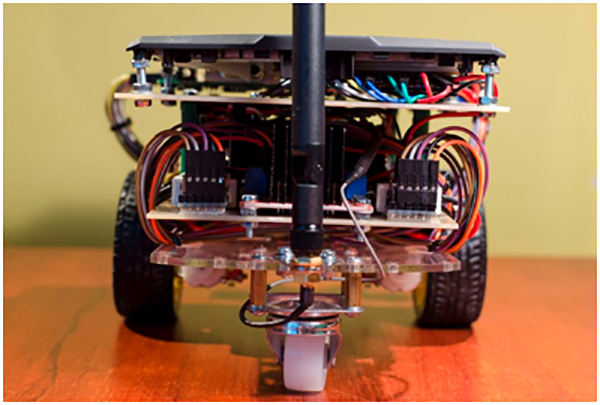 In search and rescue operations, it has been found that vehicles or “platforms” with two specific roles are useful – one role is that of a “seeker” which finds the problem area. The other role is that of a “rescuer” which is fully equipped to perform the rescue operations. The same idea goes in this project. One platform has IR thermometer and it will autonomously traverse an area riddled with hindrances in search of a “victim” (a hands warmer which is detectable by the IR thermometer). As soon as the target is discovered, it will figure out the most efficient route to the starting location. The second platform then would traverse along that path, without any sensors, and stop at the destination. It can now perform the rescue operations.
In search and rescue operations, it has been found that vehicles or “platforms” with two specific roles are useful – one role is that of a “seeker” which finds the problem area. The other role is that of a “rescuer” which is fully equipped to perform the rescue operations. The same idea goes in this project. One platform has IR thermometer and it will autonomously traverse an area riddled with hindrances in search of a “victim” (a hands warmer which is detectable by the IR thermometer). As soon as the target is discovered, it will figure out the most efficient route to the starting location. The second platform then would traverse along that path, without any sensors, and stop at the destination. It can now perform the rescue operations.
pcmihnea, the maker of these robotic vehicles, used Vivado Design Suite for their designing. As for the modules, the ones that are needed are: LCD, ultrasound, IR thermometer, RF transmitter, motor driver and Nexys4’s on-board peripherals. A source code is needed that decides which machine assumes which of the two roles and when.
Watch the video below. It illustrates in detail about the design of the two robots, and later on they are shown in action
Filed Under: Reviews


Questions related to this article?
👉Ask and discuss on Electro-Tech-Online.com and EDAboard.com forums.
Tell Us What You Think!!
You must be logged in to post a comment.